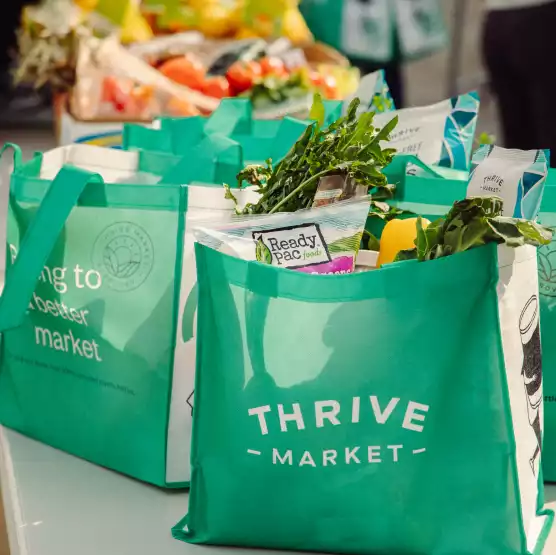What Labels Don’t Tell You — and How to Cut Through the Health Hype
I used to feel pretty good about my grocery cart. Whole grain crackers, organic cereal, fruit-flavored yogurts, plant-based frozen meals… I thought I was doing everything right. But over time, I started to feel anything but right. I was constantly tired, bloated, and frustrated. I’d look at those labels and wonder — Why isn’t this working?
It turns out, I wasn’t nourishing myself with real food — I was falling for what’s called the “health halo.” And I’m not alone.
What Are Ultra-Processed Foods, Really?
Ultra-processed foods aren’t just junk food like candy and chips. They’re foods that have been heavily altered with additives, preservatives, emulsifiers, colors, artificial flavors, or industrial oils. And many of them look pretty innocent — even healthy.
Think:
-
Protein bars
-
Bottled smoothies
-
“Low-fat” flavored yogurts
-
Granola with a long list of unpronounceable ingredients
-
Frozen “health” entrees
-
Veggie chips and baked snacks
Did you know that over 60% of the average American’s daily calories come from ultra-processed foods?1 That stat blew me away.
I used to think if something said organic or plant-based, it was automatically good for me. But those words don’t mean the food hasn’t been highly processed. In fact, they’re often used as a disguise.
🚫 Why Ultra-Processed Foods Are Often Problematic
Many are linked to:
-
Inflammation
-
Obesity
-
Type 2 diabetes
-
Heart disease
-
Cognitive decline
-
Depression and mood instability
-
Gut microbiome imbalance
And it’s not just junk food like soda and chips — it includes:
-
Sweetened yogurts
-
Protein bars
-
Meal replacement shakes
-
Flavored oatmeals
-
Packaged plant-based meals
Why Ultra-Processed “Healthy” Foods Can Be Harmful
Even when they look clean and wholesome, these foods can slowly chip away at your health. Some of the biggest concerns include:
-
Disrupting gut health with additives like carrageenan, gums, or artificial sweeteners
-
Inflammation and weight gain due to high sugar, refined grains, and industrial seed oils
-
Low nutrient density — they fill your belly but not your body
-
Mood and energy crashes — yep, even some protein bars
And worst of all, they keep us hooked. Designed to taste good and feel “healthy,” they’re marketed to those of us trying to do better.
Vegan, Gluten-Free, Oil-Free Recipes for Lifelong Health
A Systematic Review of Worldwide Consumption of Ultra-Processed Foods: Findings and Criticisms
Read the report on National Library of Medicine
The Health Halo: Don’t Be Fooled by the Packaging
Food companies are experts at marketing. Slap a “gluten-free,” “vegan,” or “heart-healthy” label on the box, and most of us won’t think twice. But here’s what I learned:
A long ingredient list filled with unfamiliar names is a big red flag. Many of those ingredients have little or no nutritional value — they just make food shelf-stable, addictive, or artificially tasty.
And don’t be tricked by terms like:
-
Natural flavors (that term is barely regulated)
-
Sugar-free (often means full of artificial sweeteners)
-
Multigrain (can still be made with mostly refined grains)
What to Look for Instead
I don’t believe in fear-based eating or guilt. But I do believe in real food, real ingredients, and real nourishment. Here’s what I’ve started doing:
-
Flip the label over — fewer ingredients is usually better
-
Avoid additives you wouldn’t use in your own kitchen
-
Choose whole or minimally processed foods as often as possible
-
Eat fresh when you can — fruit, eggs, nuts, oats, fresh veggies, lean meats
-
Make simple swaps like DIY trail mix, overnight oats, or hard-boiled eggs instead of processed “health snacks”
It’s not about being perfect — it’s about being informed and empowered.
$60 in FREE groceries when you join Thrive Market
Based on findings from the 2018 study “Ultra-processed food consumption and excess weight among US adults,” published in BMJ Open. Read the full study here → ↩
My Aha! Moment (And Yours Might Be Coming Too)
One day I looked at a “healthy” granola bar in my pantry and realized it had more than 20 ingredients — including three types of sugar and a handful of things I couldn’t pronounce. That was it for me. I cleaned out my pantry, got back to basics, and started feeling better in just a few weeks.
You don’t have to do it all at once. Start small. Make one swap. Read one label. Choose one food with real ingredients over one with a marketing claim.
Your body — and your energy, mood, and mind — will thank you.








[…] asked for more, and here we are. After the buzz around What’s Hiding in Your So-Called Healthy Foods?, it became clear that many of us are ready to dig deeper into what we’re really eating. Just […]